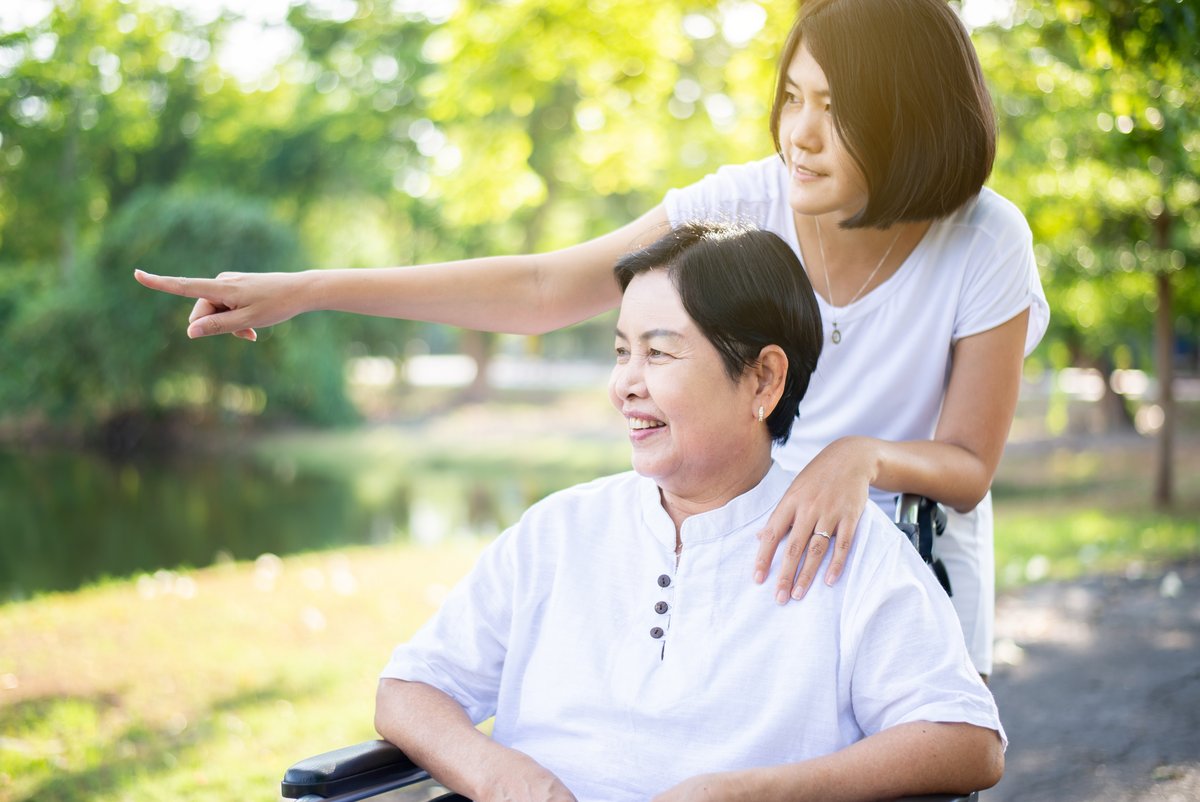
- Formal care is often expensive and not always covered by health insurance or social security programmes. Thus, many people rely on informal care within the household.
- As societies keep aging, it is increasingly important to identify population groups who require targeted support in family caregiving.
- Individuals with a lower socioeconomic status are more likely to provide informal care.
- National income inequality and social expenditure shape individuals’ caregiving decisions.
- An increase in social spending and a more equitable resource distribution is needed to support informal caregiving and help disadvantaged groups.
(April 2023) As the necessity for informal care increases in aging societies, it becomes even more relevant to identify population groups in need of targeted support. To do so, a new study using data from the Survey of Health, Ageing and Retirement in Europe (SHARE) and from the English Longitudinal Study of Ageing (ELSA) explores the association between individuals’ socioeconomic status and informal care provision within the household. An international research team consisting of Nekehia T. Quashie, Melanie Wagner, Ellen Verbakel and Christian Deindl finds that groups with lower socioeconomic resources – classified as education, wealth, and income – are more likely to provide informal care. The researchers also stress the importance of the national social policy context and suggest more equitable social spending as a means to minimize intensive family caregiving.
Cross-country comparison through SHARE and ELSA data
By analysing pooled data from SHARE Waves 1, 2, 4, 5 and 6 and ELSA Waves 2, 3, 4, 6 and 7, the researchers provide a European cross-country comparison. Given the study’s focus on within-household care, respondents living alone or living only with children younger than 18 years were excluded from the sample, leaving over 97,000 respondents from 21 European countries.
Role of socioeconomic status and national structures in informal care provision
Since formal care can be costly and is not always covered by health insurance or social security programmes, many people rely on within-household care by family members – an issue that becomes only more salient in the context of aging societies. Next to individuals’ socioeconomic status, Quashie and colleagues also integrate two country-level measures into their analysis: income inequality as well as social spending to support individuals and households. In countries with a more developed or generous welfare state, and thus, higher levels of social spending, they expect there to be less need for informal care by family members (and vice versa). Additionally, they consider respondents’ age, gender, employment status and physical health.
Informal caregivers are more likely to be socioeconomically disadvantaged and have poorer health
As found in the study, within household informal caregivers are likely to have a lower level of education, income, and wealth compared to non-caregivers. In other words, it is more common for individuals with a lower socioeconomic status to provide informal care within the household. Caregivers also tend to be older, female and report poorer physical health. While informal caregiving activities can have positive effects on self-esteem and family relationships, they may also present additional physical strains on the caregiver – especially in countries with limited social state intervention.
Varying levels of social spending and income inequality cause country-specific differences
The prevalence of care provision inside the household varies between countries. The lowest values are displayed by Sweden and Denmark (4% and 5%), where the relative amount of social spending is particularly high. Meanwhile, Portugal, which stands out as the investigated country with the highest level of income inequality, displays the highest prevalence of care provision inside the household (12%). The researchers derive, that countries with a lower level of social expenditure and higher income inequality are more likely to observe a stronger necessity for informal care provision.
Lacking state support potentially aggravates socioeconomic and gender inequalities
The social policy context partially shapes cultural norms and expectations about caregiving decisions. Therefore, wealthier countries, where demographic change is usually more advanced, may have expanded their welfare infrastructure to meet the needs of an aging population. A context of income inequality, on the other hand, can strengthen family solidarity at least in circumstances where family members are vulnerable and in need of care. However, to provide the necessary resources for their family, informal caregivers, especially women, reduce hours or stop working altogether, aggravating economic insecurity and gender inequalities. The study concludes that an increase and a more equitable distribution of social expenditure and economic resources (e.g., income) is needed to reduce intensive family caregiving and support aging adults.
Study by Nekehia T. Quashie, Melanie Wagner, Ellen Verbakel and Christian Deindl (2021). Socioeconomic differences in informal caregiving in Europe. European Journal of Ageing. DOI: 10.1007/s10433-021-00666-y.
URL: https://link.springer.com/article/10.1007/s10433-021-00666-y
Photo: Adobe Stock / gballgiggs

